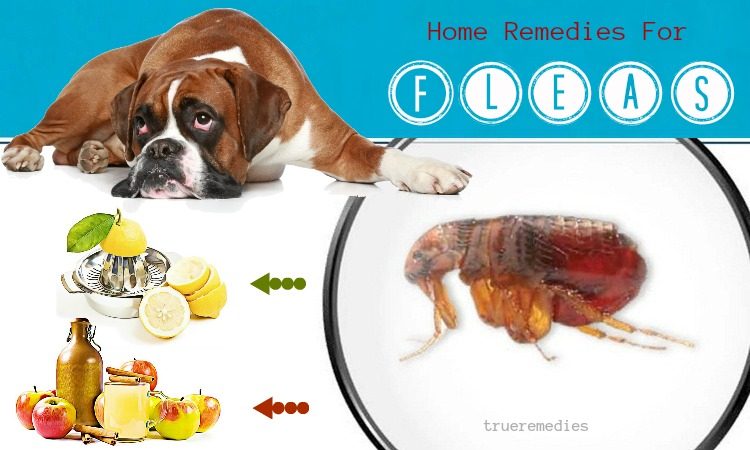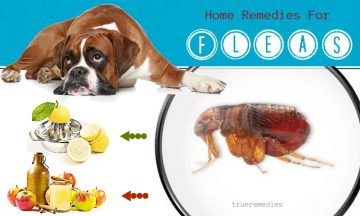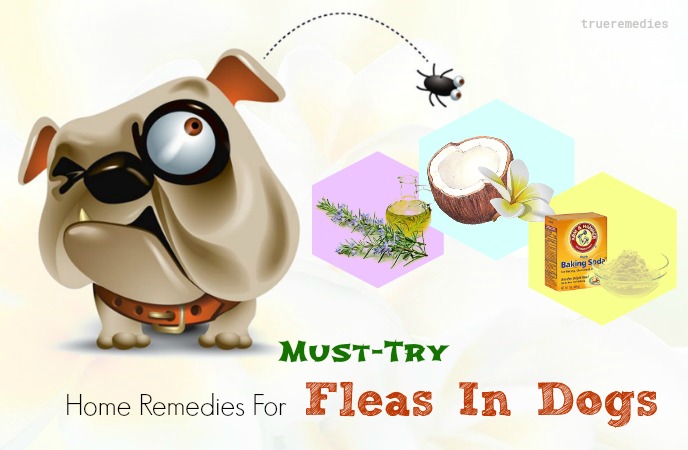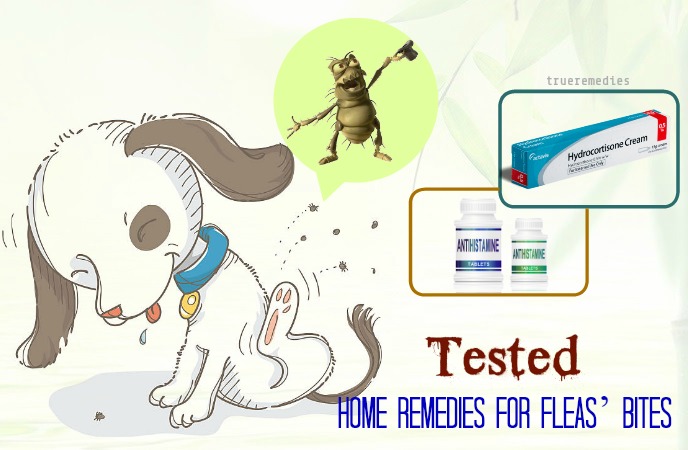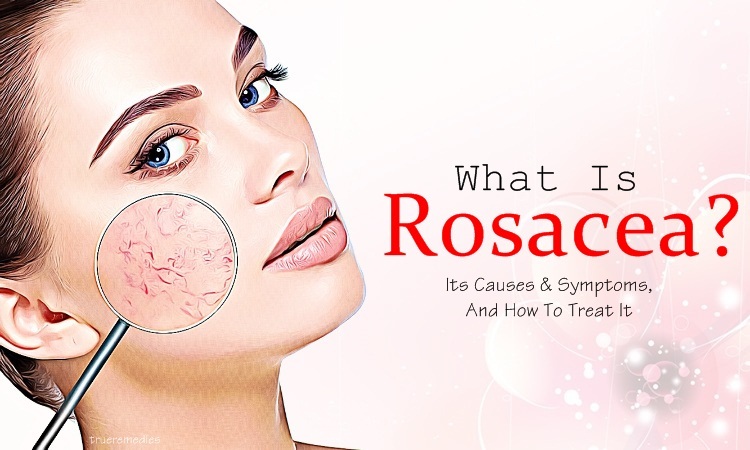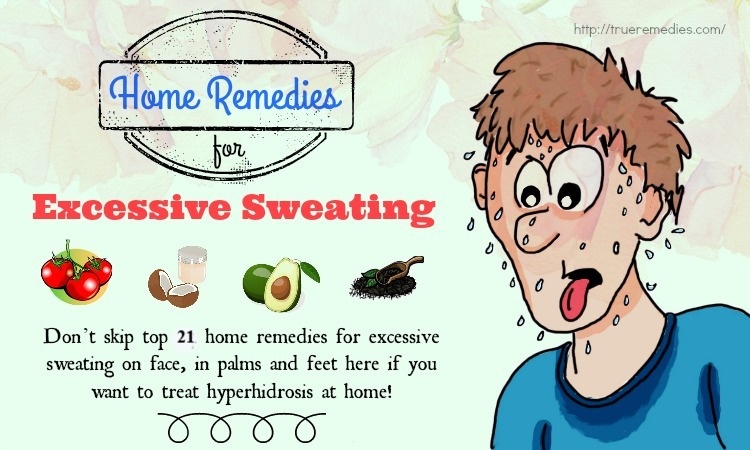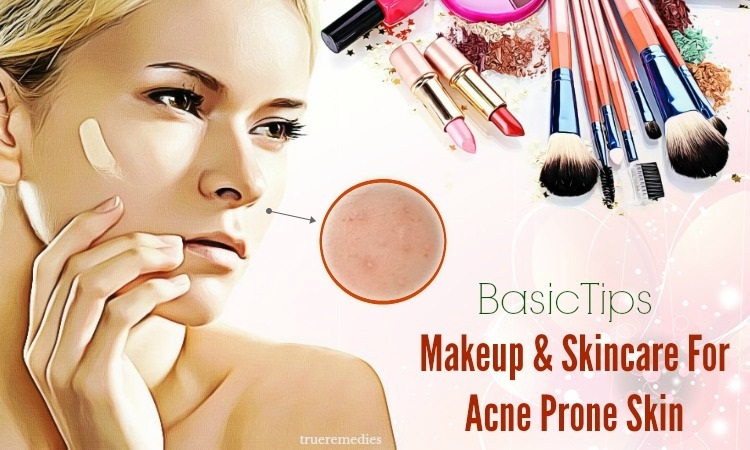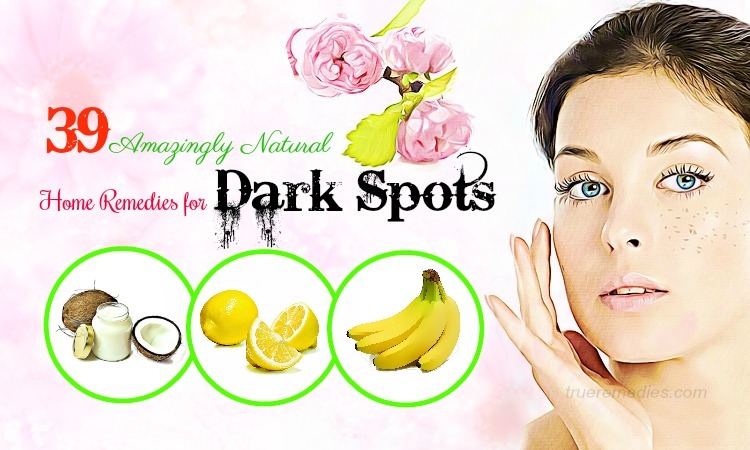Contents
If your dog is constantly scratching and shedding, they are probably having serious problems with fleas. If fleas appear on dogs, they are also in your home, in your yard or on your side. Flea can be a nightmare for you and your dog if you do not know how to eliminate this parasite.
Some areas with warm climate throughout the year are favorable conditions for fleas to develop. The best method you can do is prevention, but there are also ways to kill fleas after they hatch and multiply on your dog. This article will give you home remedies to help you do that. But first, take a look at the basic information about fleas.
What Are Fleas?
Flea is a common name for small insects of the Siphonaptera genus (some of which are scientifically named Aphaniptera). Flea is a parasite that lives on the host's skin as mammals and birds to suck up blood. The flea body is just 1.5-1.6 mm long but they are strong.
Fleas can jump 18 centimeters – about 200 times their body length, making them the highest and farthest animals among animals. Fleas can push balls 30 times heavier than themselves. There are about a thousand different species of fleas. They are found on every continent, even in Antarctica.
Flea is an infectious agent. By jumping from one place to another, they determined the fate of mankind. Historically, the plague caused by fleas in 1374 has robbed the lives of a quarter of the European population.
How To Detect Fleas?
Before you hunt for fleas, think about why you suspect your dog may have fleas. If you see fleas on dog or indoors, you can be sure that you are dealing with fleas. However, you may experience flea problems even if you have never seen fleas in dogs or in your home. Dogs can remove adult fleas from their hair themselves. Fleas may fall out of their body and hatch within a few weeks. In any case, it is important to make sure that your dog has fleas.
TrueRemedies Partner Solutions

Need a Help from the Leading Expert Online, Available 24/7?
They’re all here and ready to answer your questions online or by phone. Keep asking questions until you get the answer you need.
Here's the way to detect fleas:
- Notice The Reactions Of Dogs
If dogs are susceptible to fleas, they may have an allergic reaction. Even when dogs are not allergic to flea saliva, they will also be irritated and itchy by flea bites. This situation leads to excessive scratching of dogs.
You may find it difficult to detect fleas on dogs as they jump on your dog to suck up blood and jump out again. This explains why your dog can get infected with fleas even if you do not find them.
- Pay Attention To The Behavior Of Dogs
Your dog can suddenly avoid the room that it previously liked, especially the room with carpet. Dogs can also be restless and irritable, and may even snarl and shake their heads. This action shows that it is trying to get rid of fleas. Some cats may be more sensitive to flea bites and may be more annoyed by fleas. They may have strange behaviors because of discomfort.
- Notice Signs Of Anemia
If fleas attack your dog vigorously, dogs may lose blood and develop anemia. If this condition occurs, your dog will have symptoms such as fatigue, pale gums and sudden weight loss.
- Brush Dog Hair
Brush from head to tail dogs with a flea comb, and check the dog's hair and skin while combing. Pay close attention to the back of the dog's back, the base of the tail, and the inside of their legs. These locations are flea favorite places. Then check the comb. Even if you do not see the fleas, you can still find their feces or eggs which look like salt and pepper. If you find anything suspicious, put them on a wet tissue. The feces of the flea are bloody, so it becomes dark red when wet.
In addition, if dogs are attacked by fleas, they may have the following signs:
- Small lumps or hard scales which are usually around the neck and along the back
- Skin irritation, especially in the nape and tail
- Dogs lose much hair
- There are tapeworms in the feces of dogs
What Are Risk Factors?
Fleas greatly affect the animals. Even if you take care of your dogs carefully, fleas can still find ways to attack them. However, if you do not regularly bathe your dog, they will often be affected by fleas.
When To Call A Veterinarian?
You can remove fleas in a variety of ways; however, if your dog is seriously injured by fleas, you need to take it to the vet. Besides, if you have any questions about fleas, please consult the veterinarian for more details.
There you have learnt some basic information about fleas. It is time for you to discover some of the best home remedies for fleas that help you prevent or remove fleas from your dogs. Please take a look at TrueRemedies.com!
Top 27 Home Remedies For Fleas And Ticks In Puppies And Dogs
Here we divide the article into several sections, including home remedies for fleas in puppies, home remedies for fleas in adult dogs, and home remedies for fleas’ bites. Let’s check out!
I. 5 Effective Home Remedies For Fleas In Puppies
The puppy's immune system is very weak, so you need to adopt some special ways to remove fleas for them. Check out below!
1. Do Not Use Common Flea Treatment Products For Puppies
Newborn puppies are the perfect environment for fleas because they are warm, moist and easy to suck blood. Unfortunately, there are no flea safe products for newborn puppies. The puppy's internal organs are more sensitive than the adult dog, so it is easy to see the side effects of flea medication.
Depending on the drug, the possible effects are excessive diarrhea, vomiting, and respiratory problems. In addition, they can become extremely sensitive to stimulants and suffer from severe depression.
Some anti-flea products also explicitly recommend labeling as inappropriate for puppies. Other products have never been tested in puppies, so manufacturers are usually not recommended for puppies.
In particular, you should avoid using dog products containing Permethrin because these products are not safe for puppies. The metabolism of the puppy is too weak so it cannot decompose Permethrin. Thus, this substance can accumulate in the puppy's body and cause nerve damage, resulting in excessive tremor, drooling, numbness or even seizures. Unfortunately, dog products that do not contain Permethrin are often ineffective, even wasting money. Therefore, it is best not to use flea treatment products for puppies.
2. Bath Them With Warm Water
Since no product is suitable for puppies, the only solution is to remove fleas by hand. First, you need to bathe it with warm water. To bathe your puppy, you need:
- Pour warm water into the tub or pot. The temperature of the puppy bath water is the same as that of the infant bath.
- Put the puppy in the water tub, try not to let it choke water.
- Wet its hair completely for about 5 minutes.
- Put the puppy in a warm and clean towel and gently wipe its hair.
3. Brush Their Hair
After bathing your puppy, use a brush to brush its hair and remove the flea. Wrap puppy in dry towel and place it on flat surface. You need to do this when its hair is still wet. The teeth of flea combs are usually very thick and they can pull out fleas from puppy hair. You should start to brush from the puppy’s neck. Brush the hairs until they are completely brushed.
Kill fleas by crushing or dropping them into boiling water. You should kill all fleas after removing them from the puppy hair to prevent them from returning and causing re-infection. You can kill fleas by pinching them between two fingernails or dropping them into boiling water.
4. Prevent Re-Infection
After removing the flea from the puppy hair, you need to keep the puppy away from bed sheets or animals that are infected with fleas. You should keep puppies in a flea-free environment after helping them remove fleas. However, do not spray the drug which prevents fleas on puppy hair. Instead, you should isolate the puppies from its mother or bedding that has not been treated with fleas. This step helps prevent re-infection of the flea.
5. Know When To Start Using Dog Flea Products
As the puppies grow, their body can handle the flea-fighting ingredients in the medicine and the flea products becomes safer for the dog. You must always follow the instructions on the label to know the specific age that puppies are allowed to use. You can refer to the following licensed flea products:
- Revolution (active ingredient is Selamectin) can be used for puppies after 7 weeks of age.
- Frontline (active ingredient Fipronil) can be used for puppies after 8 weeks of age.
- Drugs like Comfortis (active ingredient is Spinosad) are only safe for puppies after 14 weeks of age.
II. 13 Must-Try Home Remedies For Fleas In Dogs
In regard to natural home remedies for fleas in dogs, the options are various. Unlike puppies, the dog's immune system is fully developed. Moreover, dogs also know how to remove fleas from their hair and skin by themselves. Here are some ways you can help them do this.
1. Start By Thoroughly Bathing Your Dog
Treat your dog with mild soothing or natural detergent made from citrus fruit. You can use a common flea medication. If fleas cannot stick to the fur, so they will fall into the water and drown. You should trim your dog's hair before using other treatments. This will help the flea medication be able to touch the dog’s skin, where the fleas live.
2. Help Your Dog With Both Oral And Topical Medications
Drugs such as Program and Sentinel can be used in conjunction with topical medications such as Frontline. Be sure to use the right dose for your dog, as they may have serious reactions if overdose.
Even if you do not find a flea, you should consider using a product that can both prevents and treatment fleas. Current flea treatment products are safe and extremely effective. Some products may be purchased without a prescription while others may only be purchased at a veterinarian's office. Choose a product specifically for dogs or cats, as some dog products can harm the cat. Talk to your veterinarian to select a product that meets your dog's needs.
3. Use A Flea Medication Every Month
Follow the instructions on the package or as directed by a veterinarian. This will protect your dog from fleas and let you know if their symptoms are caused by fleas. If the symptoms disappear after treatment, the fleas may have contributed to the problem, even if you have never seen them. Preventive treatment is in the form of oral, injection and topical application.
Let your dog walk freely around the house after you handle fleas in your home and on your pet. The fleas smell the “prey” and jump on the dog's fur, but they will soon be destroyed as soon as they bite the dog's skin.
4. Buy A Flea Necklace Approved By A Veterinarian
There are many types of flea necklaces. Some have good effects while others may be harmful to dogs. Therefore, it is important to talk to your veterinarian before giving your dog a flea necklace.
You can put a flea necklace in a dust bag of a vacuum cleaner to remove all fleas sucked in.
5. Wash Your Dog's Belongings
Washing of dog's belongings can significantly reduce the number of eggs and larvae of fleas and help flea medications work better. The washing process will not kill the flea, but some eggs can be eliminated through the flushing process. On the other hand, the average drying time of about 30 minutes will kill the eggs and the number of fleas remaining on the fabric.
6. Try To Keep Your Dog In The House As Much As Possible Within 30 Days
If your dog is forced to go out, remember to keep it away from bushes and areas of rock and sand. If you are raising a dog and need to take it on a regular walk, in the first month try to walk on the curb.
Although fleas can be poisoned as they jump on the dog's skin and fur, while trying to eradicate this nuisance, you probably do not want your pet to catch new fleas while trying to kill the old fleas.
If possible, keep pets at home during the winter months. Pet isolation also saves you money. After eliminating the spread of fleas, you will not need to treat them again unless you spot further fleas.
7. Let The Dog Eat Coconut Oil
If your dog is allergic to chemicals, you can apply natural remedies, such as using coconut oil. You need to buy pure coconut oil. Because coconut oil is used for dogs, you should choose the highest quality. If possible, buy organic coconut oil. Avoid buying refined coconut oil because the process will destroy the nutrients of this vegetable oil.
All you need to do is giving the dog 1 teaspoon (4g) of coconut oil for every 4.5 kg of weight, but you should increase the amount slowly. Start taking the dog for a quarter of this intake for a few days before increasing the dose. For example, if the dog weighs 9 kg, you should start taking 1/2 teaspoon (2 g) of coconut oil for a few days. Then slowly increase to 2 tablespoons (8 g). Allowing the dog to drink too much coconut oil from the beginning can cause the dog to suffer from diarrhea or indigestion. Feed the dog for coconut oil directly or mix it with dog food.
One thing to keep in mind when applying this remedy is to balance the amount of omega-3s in your dog's diet. Consider the dog's overall diet and make sure you do not add too much omega-3 found in coconut oil to its diet. If you are applying a functional diet containing omega-3 oil for your dog, alternate functional foods and coconut oil for good results. Excessive intake of omega-3s may cause digestive problems, thrombosis (blood clots) and insulin resistance.
You should also ask your veterinarian about using coconut oil for a long time. Some veterinarians are skeptical of the potential benefits of coconut oil on dog skin. So, you should ask your veterinarian about giving your dog coconut oil as part of his regular diet. If the dog is overweight, the veterinarian can recommend only short-term use of coconut oil.
8. Apply Coconut Oil On Dog Skin
Coconut oil has lauric acid, which is a fatty acid, saturated fat, and lipid, which makes up 50% of fatty acids found in coconut oil. Not to mention the health benefits for human beings, lauric acid also works as an effective and natural flea killer.
Fleas and sticks try to avoid things containing lauric acid because they have a built-in danger detector which tells them to avoid at all cost.
Therefore, lauric acid is used in the healthcare and medical industries to help kill off fungal, bacteria, and viral infections [1].
You should look for pure and organic coconut oil, which is rich in nutrients. Avoid refined coconut oil which has been bleached and deodorized (RBD).You need to wear gloves when doing this remedy. While coconut oil can harm little insects, like fleas, it is totally safe for dogs as well as cats.
All you need to do is:
- Warm oil with hands. If the coconut oil is liquid, take 1/2 teaspoon (2 g) into the palm. Rub your hands together to let the oil dissolve and cover your palms.
- Apply oil on the back, lower legs and abdomen of the dog.
- Apply coconut oil to areas affected by fleas.
- Continue applying oil on your hands if needed.
- Apply coconut oil on the dog's skin 1-2 times a day when the dog has skin problems.
9. Use Apple Cider Vinegar
There are a lot of options available for killing fleas; however, many of them have chemicals as well as non-natural ingredients which are harmful for your pet. Fortunately, a natural but effective flea killer is likely available in your kitchen right now: apple cider vinegar. For a long time, apple cider vinegar has been known for its ability to remove fleas. It provides an inhospitable environment that makes fleas hard to survive in. Both the taste and smell of apple cider vinegar are off-putting to fleas.
Actually, apple cider vinegar may be best used as a preventative method to protect your dog from fleas. There are a variety of ways to use apple cider vinegar as a natural flea repellent, such as in baths, as a spray or in drinking water.
Here are some suggestions for you to follow:
- Instead of directly applying apple cider vinegar to your pet's skin, you need to dilute it to prevent irritation. Mix 1 cup of apple cider vinegar, 1 liter of water and 30 ml of castille soap. This diluent is powerful enough to handle fleas and ticks, but not so strong that you smell it.
- You can add 2-3 drops of lavender or cedar essential oil to the mixture. These oils will repel the flea, while helping the solution smells pleasant. You can also add 60 ml of aloe Vera to the solution. Aloe helps moisturize the pet's skin and repel fleas.
- Apply this solution to the dog fur. At this time the castille soap will float, so you should rub all the soap bubbles into the pet's skin.
- Brush their hair gently and carefully to remove the flea.
- Bathe them with water and then perform this remedy again.
10. Use Lemon Juice
Lemon juice can be used to remove fleas. How to kill fleas with lemon juice? Lemon juice if mixed with water is considered a natural deterrent for fleas and sticks. However, you need to be careful not to dry out your dog's skin. Lemon has some compounds which are toxic to dogs, horses and cats when ingested or might result in photosensitivity when applied to their skin. Do not spray your pet’s ears, eyes, nose, between his toes, and genitals [2].
All you need to do is:
- Mix lemon juice with warm water to 1: 1 ratio, stir well.
- Put a brush or comb to the lemon juice and groom the dog so that the lemon juice comes in contact with the dog's hair.
- Repeat the second step until all the dog's hair is in contact with lemon juice.
- Repeat this remedy once a day for three days.
11. Try Using Yeast
Yeast is a natural precaution and is a substitute for strong chemicals. Evidence of the effectiveness of this therapy is not yet confirmed, but many say that this remedy is effective. Yeast will penetrate the dog's skin, then it is excreted out through the pores. This makes the skin and the dog's hair less attractive to the fleas.
Add brewer's yeast to dog food every day or every two days. Consult your veterinarian to determine the best dose for your dog based on its age and weight. Do not self-determine dosage without the veterinarian's approval.
12. Use Rosemary
Though using rosemary for flea removal has not been scientifically validated, this is a folk remedy which was used by many people. This is a woody perennial herb used as both a culinary herb and medicinal plant for centuries. Having antiseptic properties, rosemary can be used to the coat of your pet to fight off fleas [3].
However, it is crucial to note that you try to remove as many fleas as possible from your dog prior to using a rosemary flea repellant as well as any other remedy.
All you need to do is:
- Soak some rosemary leaves in boiling water for about 30 minutes.
- Strain out the leaves and take the water.
- Add 4 liters of water into the solution.
- As this water cools, use it to shower your dog.
- Do this remedy once a day to get the best results.
Note:
- Do not use rosemary water for your cats because cats may have severe health reactions towards this remedy.
- Rosemary is just suitable for mild cases of fleas and healthy animals. For serious infestations, you should use more drastic measures.
13. Baking Soda
If you are looking for cheap but effective home remedies for fleas and sticks, you should know that an effective flea control methods is vacuuming. It will remove fleas from your carpets’ and furniture’s fibers. Luckily, there is a simple ingredient that you can use to increase the effectiveness of vacuuming – baking soda.
You just need to take the steps below:
- Add some baking soda to a basin of water
- Mix well and use this water to rinse through your dogs
III. 4 Tested Home Remedies For Fleas’ Bites
Our article of home remedies for fleas also reveals to you some specific tips on how to treat bites caused by fleas effectively. If you are bitten by fleas, you should quickly apply the methods below to reduce swelling and itching.
1. Cold Compress
As soon as you get bitten by a flea, you need to wash the wound with warm soapy water. Then, apply insect repellent and apply ice packs on the wound to reduce swelling. You can use a cold pack or frozen vegetable bag to do this Apply for 10 minutes and repeat this every 10 minutes.
2. Try Calamine Lotion (A Mild Itching Cream) Or Hydrocortisone Cream
They have the ability to soothe the itch sensation very well. Hydrocortisone is a mild steroid cream, while calamine lotion uses iron oxide to treat mild itching. Both are over-the-counter (OTC) and safe to use at dosage as directed by the manufacturer.
3. Ask Your Doctor Or Pharmacist About Antihistamines For Severe Itching
Sometimes itching is so severe that you need to take antihistamines. Your doctor or pharmacist can refer you for over-the-counter (OTC) medicine or prescriptions. Some types of antihistamines that you may consider include:
- Diphenhydramine is an OTC drug which helps relieve itching in most cases. However, it usually causes drowsiness for the user, so you should find the type that does not cause this symptom.
- Tripelennamin hydrochloride is another OTC drug similar to Diphenhydramine. This type is for drinking.
- Hydroxyzine is a doctor's prescription drug. If your itching becomes severe and you need to reduce itching while OTC antihistamines do not work, ask your doctor about hydroxyzine. This drug works by reducing the natural histamines in the body.
Besides, avoid scratching the itch and surrounding skin. Scratching can cause damage to the skin and make the skin more susceptible to infection.
4. Treat Itching With Natural Ingredients
Treatment of itching with natural ingredients is also very effective. Here are the suggestions for you:
- Apply a little aloe vera gel on the bite. You can use fresh aloe vera gel or aloe vera gel sold in pharmacies.
- Use green tea to wash flea bites. You can use green tea, black tea, bellflower tea or lavender tea. You can also replace it by placing the used tea bag directly on the bite.
- Crush the thyme leaf and apply it to the affected area.
- Bathe with warm oatmeal. You can make it yourself or buy it at food shops or pharmacies. It is important to use warm water, as hot water tends to dry your skin.
- Apply a few drops of chrysanthemum essential oil to the affected area, the discomfort will quickly disappear.
- Crush 1/4 a coconut to get a smooth powder. Apply it to the affected area.
IV. 5 Home Remedies For Fleas’ Recurrence And Spread
This is the last one in this list of home remedies for flea that we want to mention in this article. After removing fleas from your dog and home, it is best to take measures to prevent recurrence. Here are some methods to help you do this.
1. Prevent Fleas From Spreading In Your Home
Make sure you vacuum all the mats every day. Throw out all trash bags in the trash bin so that fleas cannot return to your home. You should also wash the dog's litter box with hot water to kill all fleas lurking in it.
If this cannot eliminate fleas, you may need to use household spray. This spray contains poison to kill fleas, but it can be harmful to dogs and children. You should carefully study about it before using.
2. Use Mosquito Repellents Containing DEET
Use mosquito repellents containing DEET to spray on your feet, ankles and pants every day to prevent fleas biting. If you remove fleas for your dog, fleas will be killed when they come into contact with the dog's blood. But you are not treated with anti-flea medication, so your blood is still the food of the flea. Fleas only need to suck blood to lay their eggs, so you need to stop feeding them.
After 30 days, you may no longer have to use mosquito repellents on your ankles. If you do not see fleas jumping around, you can be sure. But if you still see fleas or if you still have bites, then you must continue to spray mosquito repellant.
3. Clean The Floor Thoroughly
Thoroughly clean the floor, including carpeted areas. Vacuum the entire carpet and mattress. The vacuum cleaner not only helps to collect all fleas, eggs and larvae, but the vibration of the vacuum cleaner also makes the flea out of the cocoon.
Since insecticides cannot kill fleas at the pupae stage, making them appear as a good opportunity for you to kill more fleas. Throw away garbage bags in the trash outdoors after finishing work. Then you continue to turn on the vacuum cleaner and apply anti-flea spray to the suction head of the vacuum cleaner.
Then, clean the surface of the house. Use a cleanser such as Pine-Sol or non-diluted apple vinegar to make the fleas crawl out of the corner when you spray insecticides in your home.
4. Use A Flea Spray
Make sure the flea spray can kill both fleas and their eggs, so buy active ingredients like methoprene, fenoxycarb or pyriproxyfen. Spray on carpets, fixtures, wood paneling, walls and bedding of pets. Follow the directions on the sprayer. Do not forget the edges of the door, the corners and cracks. Fleas prefer to hide in dark places.
After the first treatment, you need to reapply it after two weeks. Some fleas in your home may remain in the cocoon or in the pupa stage where insecticides cannot be treated. Spray a second time to make sure you have removed fleas that are still in the cocoon when you spray the first time.
5. Hand Your Yard If Your Dog Is Outside The Yard For More Than 5% Of Their Time
The above are home remedies that help you remove fleas from your pet and home. Note that you need to apply them as soon as you notice signs of fleas, as we all know that fleas multiply very quickly. If you have any contributing ideas about our article of “Top 27 Natural Home Remedies For Fleas And Ticks In Puppies And Dogs” introduced in Home Remedies Category, do not hesitate to drop your words below this post. We will answer as soon as we could.

